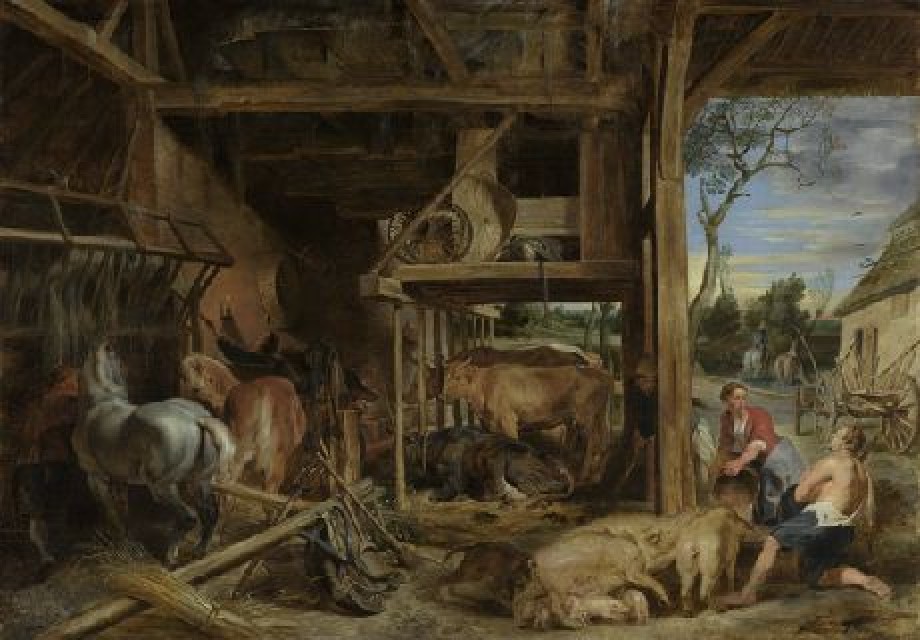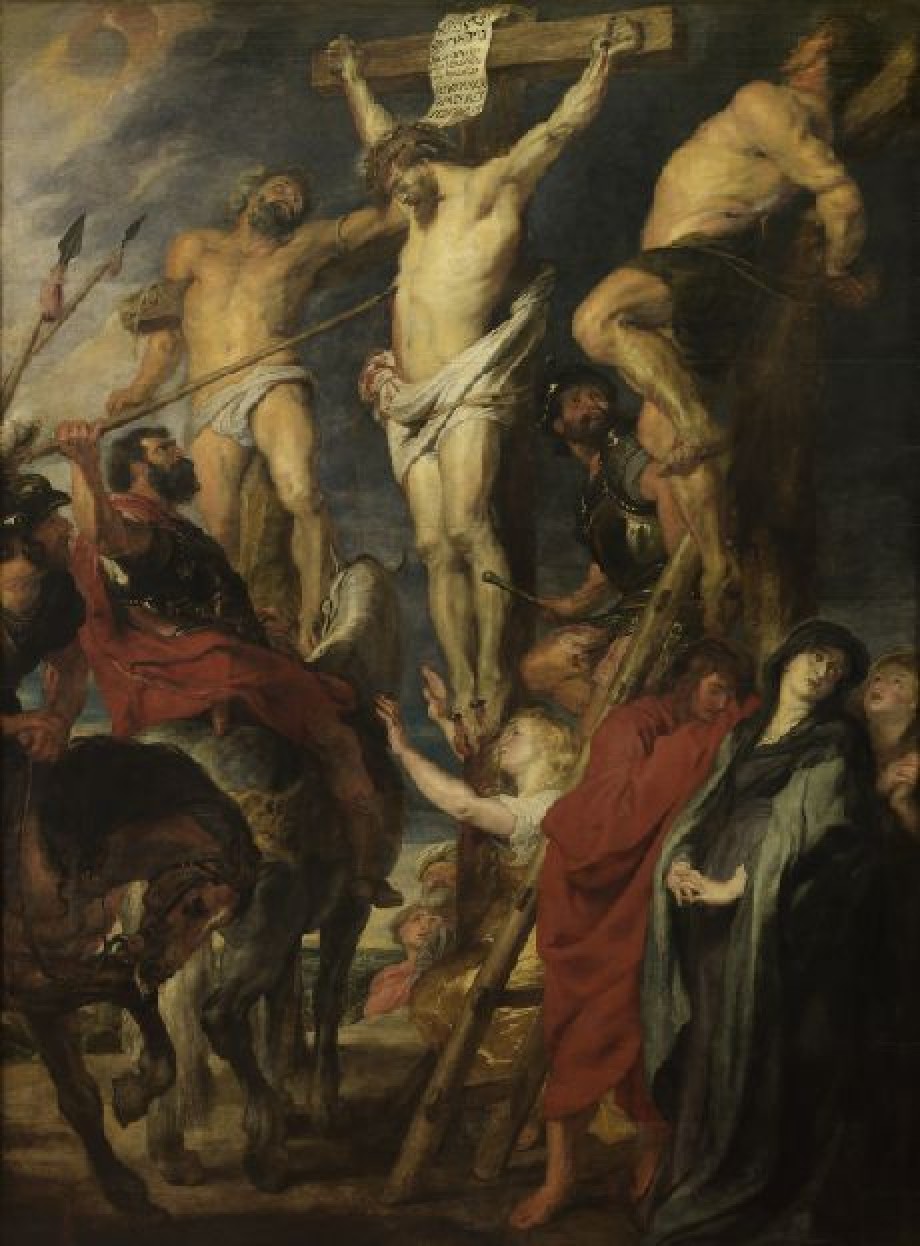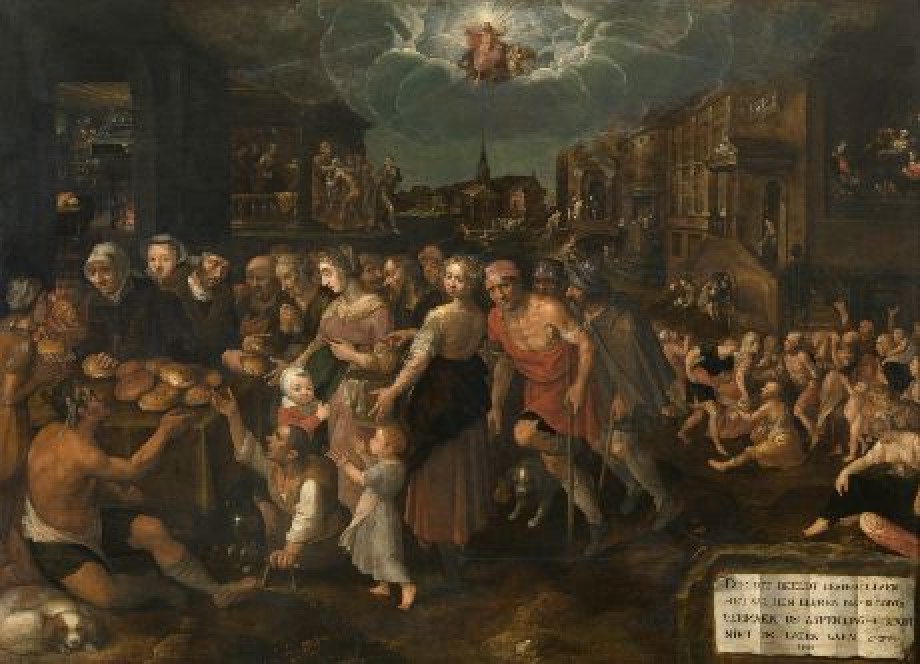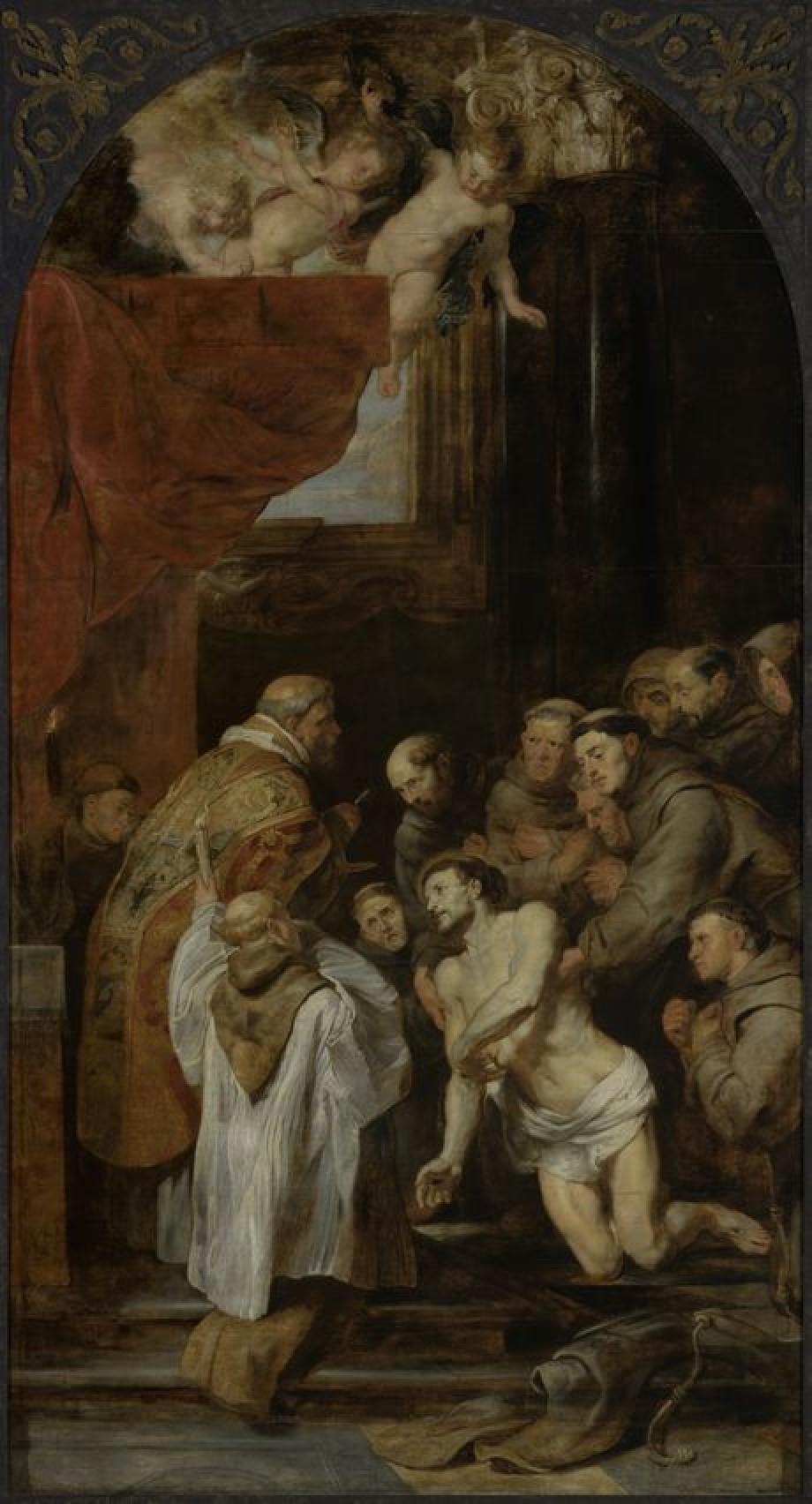Abraham Grapheus

Artist / maker
Cornelis de Vos (painter)Date
1620Period
17 centuryCollection
Royal Museum of Fine Arts Antwerp
This powerful portrait of Abraham de Graef (c. 1545/50–1624) – known by his Latinised name of Abraham Grapheus – is a fine display of the talent of the portraitist Cornelis de Vos. Gazing irritably off to one side, De Graef is wearing his unbuttoned cartwheel ruff back to front. On his chest he is wearing an imitation cuirass composed of…
Read more
This powerful portrait of Abraham de Graef (c. 1545/50–1624) – known by his Latinised name of Abraham Grapheus – is a fine display of the talent of the portraitist Cornelis de Vos. Gazing irritably off to one side, De Graef is wearing his unbuttoned cartwheel ruff back to front. On his chest he is wearing an imitation cuirass composed of metal plates from the Violeren chamber of rhetoric. That society of amateur poets was part of the Antwerp Guild of St Luke. Grapheus is picking up a goblet from a table laden with gilded drinking vessels displayed on an oriental rug. It is probably the showpiece goblet that aristocratic families of Antwerp donated to the guild in 1549. In 1794 the French invaders confiscated all of the guild’s silverware and never returned it. De Vos used sketchy brushwork to suggest an indeterminate background and a frame decorated with an egg motif. That creates a sense of depth and accentuates the sitter. An excerpt from a 1619 account book of the guild states that a panel maker called Michiel Vriendt supplied the frame for this painting.
In 1572 De Graef enrolled in the guild as a master. He originally wanted to be an artist himself, but it seems that he soon abandoned that plan. There are no known paintings by him, but records of payments show that he was active as a letter painter and gilder. It can be concluded from the fact that he and his wife Tanneken were registered in the Poor Book for impoverished and needy members of the guild that they had fallen on hard times. From the middle of the 1580s Grapheus, who was a guild servant, was active as caretaker and bookkeeper, as well as clerk, cashier and messenger. He organised the auction of goods after the death of a guild member, and also directed theatrical performances by the guild.
De Graef was popular with his colleagues. In 1616-1617, when his son had wounded guests in an inn with a knife, they collected money to compensate the victims. Frans Pourbus the Elder painted his portrait when he was in his twenties (Fine Arts Museums of San Francisco, inv. no. 1957.159), Maerten de Vos portrayed him in 1602 as a pigment grinder in the left background of the altarpiece of St Luke painting the Virgin (KMSKA, inv. no. 88), and Jacob Jordaens used him several times as a model when drawing anatomical studies and painting study heads, which are preserved in the museums of Ghent, Douai, Prague and Detroit, and elsewhere. One accordingly recognises his distinctive features in many of Jordaens’s paintings.
Read less











